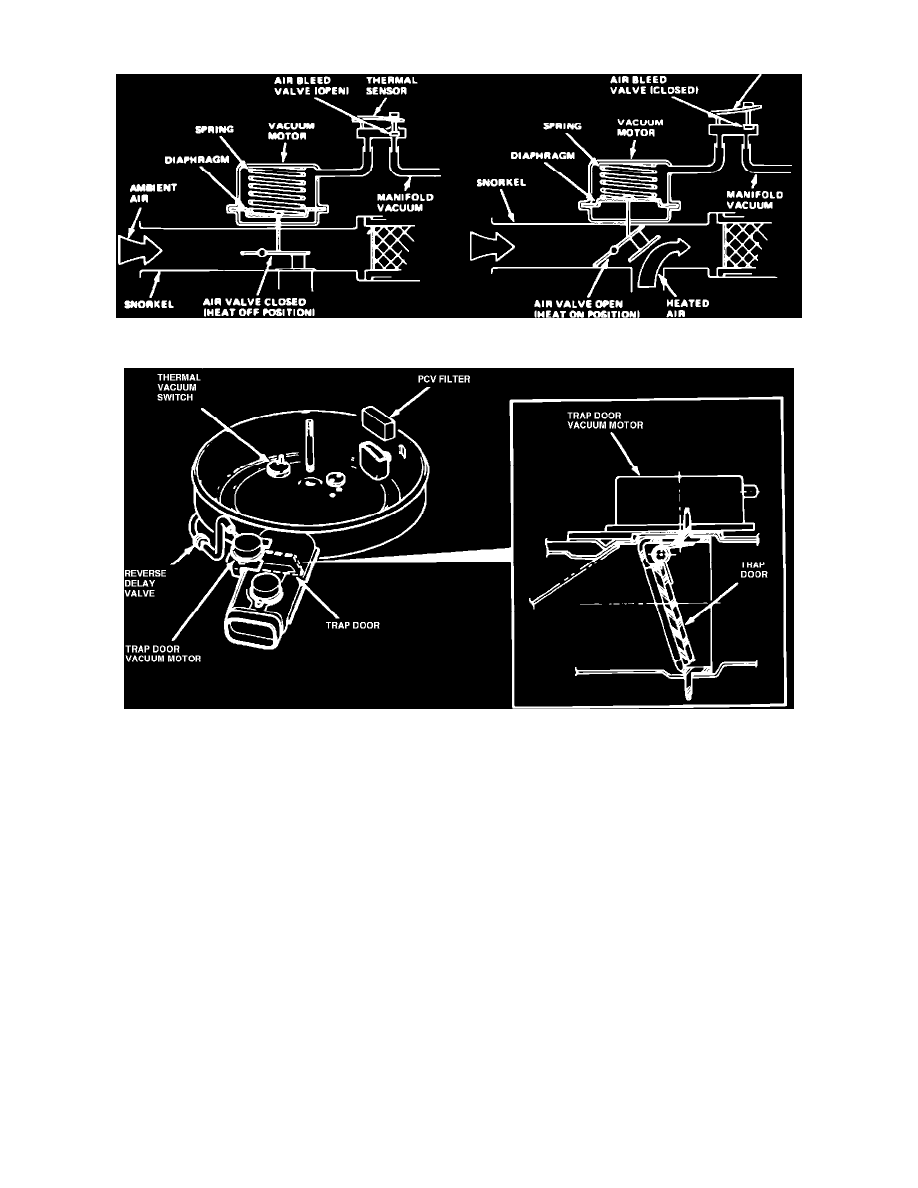Wagoneer L6-258 4.2L VIN C 2-bbl (1982)

Thermostatic Air Cleaner: Description and Operation
Fig. 27 TAC system
Fig. 28 Air cleaner with trap door
A vacuum operated duct valve with a thermostatic bi-metal switch, Fig. 27, is used on some installations. The valve in the duct assembly is in an
open position when the engine is not operating. When the engine is operating at below normal operating temperature, manifold vacuum is routed
through the bi-metal switch to the vacuum motor to close the duct valve allowing only heated air to enter the air cleaner.
When the engine reaches normal operating temperature the bi-metal switch opens an air bleed which eliminates the vacuum and the duct valve
opens allowing only cold air to enter the air cleaner. During periods of acceleration the duct valve will open regardless of temperature due to the
loss of manifold vacuum. On Cherokee, Comanche and Wagoneer, a reverse delay valve provides approximately 100 seconds delay before
allowing vacuum to close the trap door.
An air cleaner trap door is used on inline six cylinder engines and is spring loaded to close off the air cleaner and carburetor when the engine is not
operating. The door is actuated by a vacuum motor, so that when the engine is started, intake manifold vacuum opens the door allowing air to enter
the air cleaner, Fig. 28.
A reverse delay valve is installed in the vacuum line to prevent the trap door from closing during low engine vacuum periods (such as engine
acceleration). The valve also prevents abrupt closings of the trap door when the engine is turned off by gradually permitting atmospheric pressure
to enter the vacuum line.
